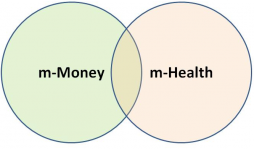pilots
Posted by MarkWeingarten on Jan 19, 2011
Barriers and Gaps Affecting mHealth in Low and Middle Income Countries: Policy White Paper data sheet 1812 Views
Author:
Mechael, Patricia, Hima Batavia, Nadi Kaonga, Sarah Searle, Ada Kwan, Adina Goldberger, Lin Fu, and James Ossman
Abstract:
Still in its infancy, mHealth, the use of mobile technologies for health, runs the risk of not realizing its full potential due to small-scale implementations and pilot projects with limited reach. To help shed light on these issues, the mHealth Alliance commissioned an in-depth exploration of the policy barriers and research gaps facing mHealth. The review identified significant gaps in mHealth knowledge stemming from the limited scale and scope of mHealth implementation and evaluation, a policy environment that does not link health objectives and related metrics to available mHealth tools and systems, and little investment in cost-benefit studies to assess mHealth value and health outcomes research to assess success factors and weed out poor investments.
As illustrated throughout the literature, the current single-solution focus of mHealth needs to be replaced by using mHealth as an extension and integrator of underlying health information systems along the continuum of care. Creating a strong collaborative foundation will be instrumental in driving and positioning public and private investment in mHealth in a way that contributes to achieving improved access to health information and services, health outcomes, and efficiencies.
Within such structured paradigms, planning for infrastructure investment and human resources capacity strengthening and identifying public and private stakeholders within the ecosystem to take leadership for the development, testing, implementation, and evaluation of mHealth activities can be appropriately mapped and planned and mHealth services more effectively extended to support the health of citizens and the work of health professionals and administrators.
Posted by MohiniBhavsar on Nov 10, 2010
In this two-part series, MobileActive.org explores how mobile money services can support health care in developing countries. In part one, we described the key ways in which mobile money services can be adopted by the health sector.
At the primary level of care, subscription-based mobile payment services can create two-way links between patients and health care providers, as summarized here.
- Patients can pay service providers directly for health care services delivered.
- Service providers can use mobile transfer platforms to reward patients with monetary or airtime incentives for treatment compliance.
At the district, regional, and national levels, governments and organizations can improve management of funds and introduce better checks and balances by using mobile money platforms. Some uses include:

